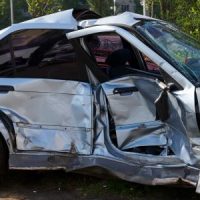Liability for T-Bone Accident Damages

T-bone accidents are among some of the most devastating types of car accidents, as they are usually accompanied by severe injuries and significant vehicle damage. Read on to learn more about these kinds of collisions, including who can be held liable for their resulting damages.
T-Bone Accident Scenarios
T-bone accidents occur when the front-end of a vehicle collides with the side of another. Most are the result of driver negligence and reckless behaviors, such as:
- Distracted driving;
- Driving under the influence;
- Falling asleep at the wheel;
- Running red lights and stop signs;
- Failing to properly judge another vehicle’s speed; and
- Speeding through an intersection or attempting to beat oncoming traffic.
All of these driving behaviors are dangerous, but are doubly so in intersections, where there are many vehicles moving in a variety of directions and where cyclists and pedestrians are also present. Unfortunately, with so many factors at play, it can be difficult to determine liability for a crash, especially if the initial collision spawned a multi-vehicle pile-up.
Determining Liability
The driver who struck the second car is often assumed to be at fault for a t-bone crash and while this is often the case, it is not always true. The reality is that collisions are rarely straightforward, as each has its own set of contributing factors and unique circumstances. To determine liability for a t-bone accident, injured parties will need to assess a wide range of evidence, including:
- Photos from the accident scene;
- Footage from dashboard, security, and traffic cameras; and
- Eyewitness testimony.
A lot can also be gleaned from the physical damage to the vehicles, which can indicate speed and direction. Even something as simple as skid marks near the accident scene can help prove whether or not a driver attempted to brake before the collision. Based on this evidence, a claimant can discover who was the primary cause of an accident, which could include:
- A negligent or reckless driver;
- The city, if the accident was caused by a defective traffic device;
- A vehicle parts manufacturer if the accident was caused by mechanical failure; or
- A third party who helped contribute to the accident.
Claimants who can prove that one or more of these parties was at fault for an accident could be entitled to compensation for their losses.
Recovering Damages
T-bone accident victims who can successfully establish that their accident was the result of someone else’s negligence can seek compensation for accident-related losses, including:
- Medical bills, such as emergency care, diagnostic testing, treatment, hospital stays, and physical therapy;
- Vehicle repair or replacement costs;
- Lost wages;
- Loss of future earnings resulting from permanent disability; and
- Pain and suffering and emotional distress.
It’s also important to note that under Georgia’s modified comparative negligence standard, accident victims who are found to be more than 50 percent at fault for a crash will be barred from recovery.
Schedule a Consultation Today
At Shiver Hamilton Campbell, our experienced Atlanta side impact collision and rollover accident lawyers are committed to helping accident victims across the state navigate the challenges of pursuing a legal claim to recover their losses. Let us put our resources and experience to work in your case. Call us at 404-593-0020 to get started.
Sources:
forbes.com/advisor/legal/auto-accident/t-bone-accident/
law.justia.com/codes/georgia/2020/title-51/chapter-12/article-1/section-51-12-4/


